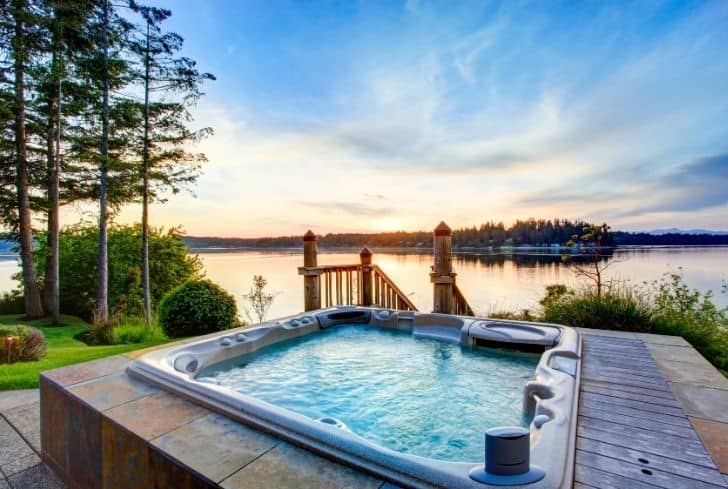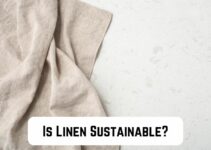A hot tub might not be included in the list of essential installations of a house. But once you’re financially and emotionally ready to explore such a retreat, you don’t have to think of an alternative place to enjoy quality time with your family or spend a chit-chat session with your friends. Or just sit back and enjoy your ‘me time’ over a book & enjoy the setting (?).
Besides improving your mental and physical wellbeing, a hot tub in a backyard might be the best thing for a nature lover to connect to the natural surroundings. But when you’re deciding on investing in it, some sustainable factors are to be kept in mind.
So, are hot tubs environmentally friendly? Well, the thing is that hot tubs produced today are much more environmentally friendly than the traditional ones. Modern hot tubs are made up of recyclable materials and consume less power than old ones. They come with advanced technologies that make them more energy efficient. Modern hot tubs use less water as compared to the older ones and you could even run them from solar power.
The fact that people today are much more eco-conscious and won’t buy products or engage in activities that are not considered environmentally friendly makes companies liable to build products that are better for our environment.
On that note, the first thing that doesn’t sound at all eco-friendly is to own a plastic hot tub where hundreds of gallons of water and other chemicals get heated up constantly. So, the question here is, what exactly are those environmental impacts of a hot tub? If so, how can you make your hot tub better for the environment and Mother Earth? To enjoy a therapeutic session inside the tub all guilt-free, let’s get an insight into:
The Environmental Impacts of a Hot Tub
Unlike old plastic-based tubs, the modern ones include a few eco-friendly features. First off, they are energy efficient. Secondly, they are able to use recyclable materials. Thirdly, these tubs feature such a design that can use eco-chemicals. Lastly, several steps are there for reducing energy usage and run the tub from solar power too.
In comparison to the daily household water usage, hot tubs use sufficient water. How energy efficient they really are is their primary eco-credential. But even so, throughout its life, it might have potential impacts on Mother Nature. While some are not in the hands of the owner, others can be worked on.
For instance, it’s impossible for an owner to check how the product got transported from the store to the house. But it’s definitely the homeowner’s lookout when it comes to water consumption, energy consumption, or sanitization. Let’s get started with the factors and read them one after the other.
1. Environment and Manufacturing Process
In traditional manufacturing procedures, the shell forms from acrylic. It, later on, gets heated in the oven at 300 degrees until it gets malleable to get molded into a shape. Traditional acrylic and fiberglass are not environmental-friendly. That’s why manufacturers have been considering eco-friendly alternatives.
That said, high-density polyethylene is used in conjunction with the rotational molding method to produce tough, lightweight, durable, lightweight, and recyclable hot tub shells. This proves to be a great alternative to fiberglass or resins that would become toxic when handled incorrectly. Manufacturers are also paying for eco-friendly components from sustainable sources.
2. Consumption of Energy
Once you install a hot tub in your house, get prepared for a glowing electricity bill each month. Running it on special occasions might reduce it, but once you get a knack of this therapeutic treatment, you’d apparently end up running it each day. That’s how the amount in the electricity bill results in your worries, tensions, and stress.
But you don’t have to prepare for cutting down on its usage. Simply by switching over to a 100% green energy supplier, you can find the right solution. However, truth be spoken, the older models still get you a considerable expense, because they are not energy efficient & poorly insulated. Always select a modern hot tub that has high thermal efficiency than those old models
Another significant commandment is the climate where the tub gets installed. It makes a huge difference as it uses more energy in order to maintain the tub’s temperature in countries with low ambient temperature. For instance, heating such a tub in Florida will be more budget-friendly than that in Alaska.
3. Transportation Cost
When you buy a hot tub from an overseas constructor, the chances are that the transportation cost will get increased. Given its heavyweight, it becomes fairly more difficult to carry the product from one town to the other. Depending on where you live, the price will get allocated to the transportation cost.
When you select a product built by a manufacturer in your area, the cost decreases. It’d be better if you consider selecting it from a local builder. This way, the carbon footprint gets much lower since there’s not much transportation involved.
4. Consumption of Water
Assuming that just because it holds around 400 gallons of water, it won’t be eco-friendly is a sheer misconception. Yes, it surely requires getting the water changed at frequent intervals. But on regular days, a household uses 400 gallons of water, whereby 10 gallons go wasted due to flushing, leaks, and other laundry essentials.
Hot tubs, on the contrary, use less than 1% of household water consumption. The fact that they require getting filled after every 3 or 4 months is enough to justify its usage. Besides, with cautious water management, it’s possible to use the old water to wash your car or water your garden. If you use the old water in such ways, then the water usage is negligible.
5. Ultraviolet Sanitization System
UV sanitization is one physical process (no, not entirely chemical). It’s the most environmentally sound and cleanest solution. During the process, the water gets pushed through the tubes, where it gets zapped with UV (it destroys anything that comes into its path). Although pricing is a major disadvantage, the fact that owners require shocking the tub occasionally is daunting. The reason is this process does not assure you the water clarity.
6. Saltwater Sanitization System
A saltwater sanitization system will utilize reactions between the warm and saltwater in the tub. This way, it creates natural chlorine. Most importantly, it does not include any of these harmful impacts of traditional chlorine when in contact with you – (1) skin irritation and (2) foul smell. But one downfall is that it can cause corrosion to the tub. Apart from being an expensive choice, splurging on the salt cells for periodic replacements is not a matter of joke.
7. Ozonator Sanitization System
Adding ozone to the tub filled with 400 gallons of water can kill bacteria. As the produced ozone’s amount is minimal, so do the environmental impacts. But again, the system must get used in conjunction with amounts of some shock treatments to keep the water clear.
8. Ionizer Sanitization System
Using traditional chemicals isn’t at all safe for the environment. That’s where this system proves to be one of the best eco-friendly alternatives, which works by releasing silver and copper ions into water and killing bacteria. The tub requires periodic shocks to ensure great water clarity and prevent cloudiness. It’s a great method as it significantly uses lesser chemicals than traditional systems.
Outlining Hot Tub Recycling or Its Afterlife
The hot tub will have huge environmental impacts if parts are unrecyclable or if owners don’t consider incorporating any of these systems at frequent intervals. The recent world’s hot tubs feature one such design that can easily get disassembled & recycled after their working lives end. It’s worst to think of a hot tub with its mechanics & working parts resting for eternity in a landfill. Not only is it potentially dangerous for common lives, but is also harmful to Mother Nature.
How To Make Your Hot Tub Better For the Environment?
Making a hot tub better for the environment entirely depends on the factors you usually keep in mind before you make that huge decision of purchasing. To ensure that you don’t experience guilt trips after choosing the wrong tub, here are some considerations to make your purchase safer and more eco-friendly.
1. Looking for energy-efficient tubs is what the recent world homeowners prioritize. An energy-efficient tub will have a higher insulation level, hence keeps the water warmer. Also, the heating system varies in terms of efficiency (from one tub to another).
2. Checking for alternative filtration or sanitization will help you select the right kind of tub.
Most homeowners would love getting hands-on a ready-made tub having all realistic features. So here are the ways to make your tub environment-friendly after it gets installed:
3. Saving electricity at home is clearly an on-point consideration. Perhaps, you can choose a slow cooking method (if it fits into your daily life). Or, what about turning down the thermostat by a degree or two?
4. Changing your hot tub’s location is also a brilliant idea. An outdoor installation is, thus, considered. It can keep the water warmer too.
5. Using a quality cover can also be an impactful decision. Keep a full cover during the winters.
6. Adding extra insulation around the tub is amazing. What about building a second wooden skin?
Bottom Line
It’s better to install your tub outdoors. It not only brings out a perfect natural setting but also minimizes the heat loss. Preventing Mother Nature from getting damaged is everyone’s job. So, why not choose sustainable ways even when it comes to hot tub installation?






